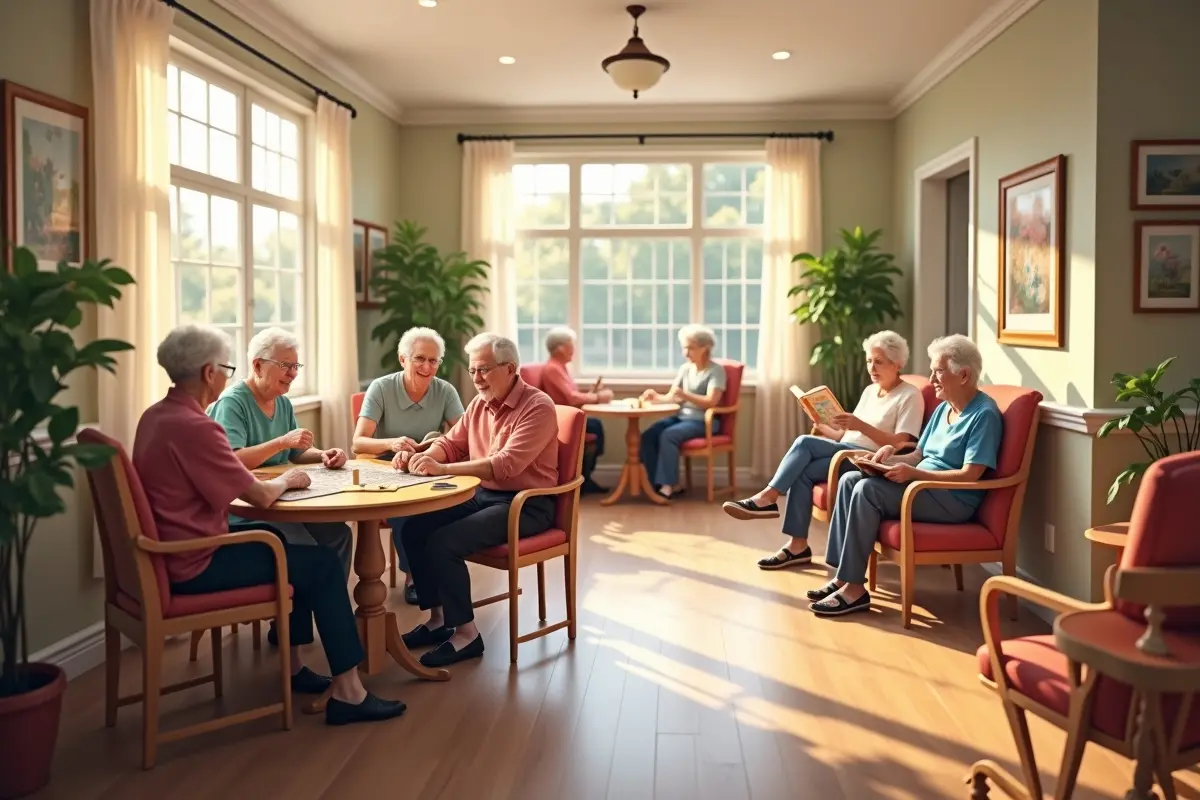Designing Senior Living Spaces for Maximum Comfort and Dignity
Creating compassionate and comfortable living environments for seniors is about more than meeting basic needs; it’s about ensuring every individual feels valued, cherished, and cared for in every aspect of their daily life. Thoughtful design doesn’t simply address the functional requirements of aging, such as mobility or safety; it takes a holistic approach that considers every facet of a senior’s well-being.
When design is approached with genuine empathy, it can profoundly transform the day-to-day experiences of residents, significantly impacting their physical, emotional, and social well-being. At its core, this approach is rooted in respect—through intentional and nuanced design, assisted living in Visalia facilities can foster an uplifting atmosphere that empowers seniors to preserve their independence, autonomy, and dignity.
Whether transitioning from their longtime family home or moving from another community setting, the adjustment to senior living can be both emotionally and physically significant. Many seniors experience apprehension or loss when making this change, and design plays a crucial role in smoothing this transition.
By prioritizing comfort, warmth, and familiarity, assisted living environments become welcoming sanctuaries that support residents as they begin to build new relationships and routines in an unfamiliar setting. Thoughtfully designed spaces can help mitigate feelings of displacement and make the environment feel more like a home than an institution.
Incorporating Home-Like Environments
Moving into a senior living community is, by any measure, a major life change. Thoughtful design choices that echo familiar elements of home can gently ease this transition, making new environments feel comforting and recognizable rather than clinical or impersonal.
Incorporating cozy, residential-style furnishings—like upholstered chairs, plush sofas, and classic tables—can immediately set a tone of warmth and belonging. Carefully chosen textures and familiar color palettes further reinforce the sense of comfort and nostalgia, helping to create an emotional link between the resident’s previous and new environment.
Small, private living spaces that adjoin personal sleeping quarters offer flexibility, enabling residents to find solitude when desired or invite family and friends for intimate gatherings, strengthening bonds and maintaining important connections.
Personalizing living areas with residents’ cherished photographs, favorite artwork, or beloved mementos further deepens their sense of ownership, pride, and identity. These items not only trigger fond memories but also provide comfort and reassurance during times of change.
Thoughtful environmental cues such as familiar floor plans, the scent of favorite flowers, or even access to preferred hobbies help reduce stress and anxiety, making it easier for new residents to settle in and feel at home. This personal approach supports the maintenance of identity and emotional well-being—critical components for a successful transition.
Prioritizing Accessibility and Safety
In senior living design, accessibility and safety are foundational, intertwined principles that must be addressed with both care and practicality. Essential accessibility features include wide, barrier-free hallways that accommodate wheelchairs and walkers, non-slip and contrasting flooring to prevent slips and falls, and strategically placed grab bars in bathrooms and hallways for added stability.
Walk-in showers equipped with secure seating options and hand-held showerheads further enhance autonomy, allowing residents to maintain personal hygiene with privacy and self-respect. Each of these details is crucial for enabling seniors to confidently and safely navigate their surroundings, significantly reducing the risk of injury while fostering a sense of independence and capability.
Additionally, intuitive layouts and brightly colored, logical signage are particularly important for residents living with cognitive decline or memory challenges. Easy-to-understand visual cues help residents navigate their surroundings, promoting independence and significantly reducing confusion and frustration. The inclusion of emergency call systems in bathrooms, bedrooms, and other strategic locations across the property ensures help is always within reach.
Integrating Natural Elements
Natural light, greenery, and access to outdoor spaces are all powerful contributors to a healthier, calmer senior living environment. Ample windows allow natural sunlight to flood into common areas, helping to regulate circadian rhythms and improve mood.
Outdoor zones—such as peaceful garden courtyards, shaded patios, and meandering walking paths—invite residents to spend valuable time in nature, promoting gentle movement and providing opportunities for fresh air and relaxation. Research consistently shows that even brief exposure to nature can yield significant improvements in mood, encourage increased activity levels, and sharpen cognitive function.
Biophilic design principles take things a step further by intentionally incorporating natural materials, such as wood and stone flooring, exposed beams, and abundant indoor plants. This approach helps create a cohesive, calming atmosphere throughout the facility, mitigating feelings of anxiety, stress, or restlessness among residents.
Thoughtful landscaping—such as sensory gardens with fragrant flowers or gentle water features—can offer moments of tranquility and sensory engagement, elevating the overall quality of life and fostering a deeper sense of well-being.
Fostering Social Connections
Spaces designed for connection and community are essential for seniors’ emotional and mental health. Comfortable lounges, spacious communal dining rooms, and lively activity centers bring people together, creating plentiful opportunities for informal conversation, group games, shared meals, or collaborative projects.
Senior living communities that prioritize these shared spaces help to combat the loneliness and isolation that many older adults experience—a critical factor, as studies have shown social engagement directly supports emotional health and can even extend life expectancy.
Flexible common areas with movable furniture can be adapted for a wide variety of activities, from lively exercise classes and gentle yoga sessions to book clubs, movie nights, and art workshops. These welcoming gathering places often become the beating heart of the community, fostering a vibrant and inclusive spirit that benefits everyone. Events and group workshops also create a sense of anticipation and excitement, keeping residents mentally and emotionally stimulated while promoting lasting friendships and a supportive social network.
Embracing Cultural Representation
Respect for cultural identity has a profound influence on a resident’s sense of comfort and belonging. Diverse communities thrive when designs intentionally incorporate meaningful colors, traditional patterns and motifs, or artwork that reflects the backgrounds of their residents.
These decisions offer important psychological benefits, such as reducing cultural isolation and affirming individual identities. Displaying residents’ cultural artifacts, native languages, and holiday traditions throughout common areas goes a long way in fostering mutual respect, understanding, and inclusion, ensuring the environment feels authentically connected to the experience of everyone who lives there.
Utilizing Technology for Enhanced Comfort
Technology has become an invaluable asset for modern senior living, transforming both daily routines and emergencies. Features like voice-activated assistants make it much easier for seniors to control lights, thermostats, and entertainment systems without requiring physical exertion.
Automated lighting systems that respond to motion help prevent accidents, especially during nighttime trips to the bathroom. At the same time, discreet monitoring and emergency call technologies provide immediate access to help, offering reassurance to both residents and their families.
Tech-enabled spaces also help bridge distances and combat loneliness. Video chat setups and user-friendly tablets enable regular virtual contact with loved ones, keeping residents engaged even when physical visits are limited. These innovations have proven especially valuable during times of illness or mobility limitations, ensuring that seniors remain socially connected, emotionally supported, and continuously engaged with the wider world beyond their community’s walls.
Final Thoughts
Comfort and dignity should drive every design decision in senior living spaces. By prioritizing home-like comfort, safety, access to nature, social opportunities, cultural inclusivity, and technological advancements, we can create environments where seniors not only feel secure but truly thrive.
These thoughtfully crafted spaces do more than promote longer, healthier lives—they champion each resident’s unique needs, honor their histories, foster independence, and uplift their daily experiences through genuine care and respect. Thoughtful design is the cornerstone of compassionate, successful senior living.







0